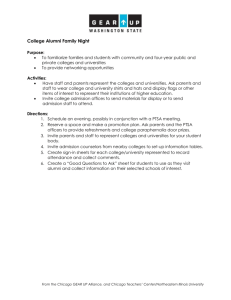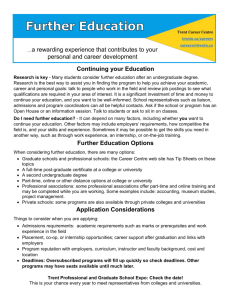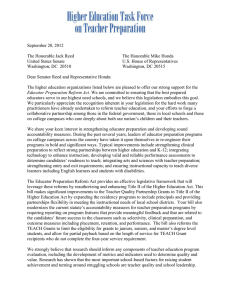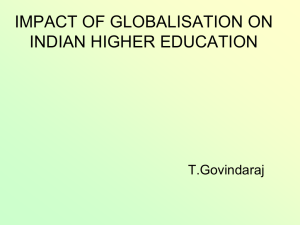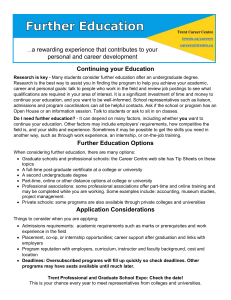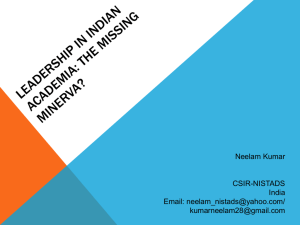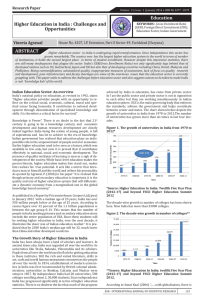Cooperation and Competition in Education: INDIA
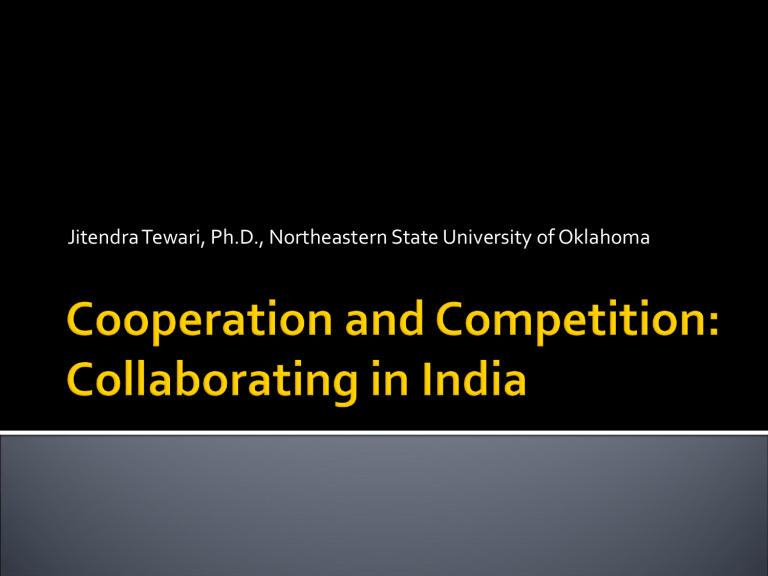
Jitendra Tewari, Ph.D., Northeastern State University of Oklahoma
1 Billion People . Higher education is largely in English . 19 languages . English and Hindi are the unifiers.
Celebrating Diversity in a Thriving Democracy
80 % Hindu Population
13.5 % Muslim Population
6.5 % Sikhs, Christians, Jains
Prime Minister: Sikh (Male): Language - Punjabi
President: Hindu (Female) – Marathi
Leader of the Ruling Party: (Christian, Italian) Female - Italian
Vice President: Muslim (Male) – language- Urdu
Schools
Government Schools and Government
Sponsored Schools – lower fees or free
Private schools (these are referred to as public schools in India, and a number are also run by foreign/Christian missionaries)– higher fees
Students of all schools take ‘common’ board exams – some are National boards, some
State level. The system is highly competitive.
State universities as well as private universities
Generally a large number of colleges are affiliated to the same university
A single university may have a large number of colleges offering the same courses affiliated to it
Students of a university would take common examinations
There are many independent private and government ‘professional’ institutions or colleges in Engineering and Medicine
Generally a university has one or only a few colleges in:
▪ Medicine
▪ Engineering
▪ Business for graduate studies
▪ Architecture
▪ Nursing
Many institutions seek and value international affiliations in the areas of engineering and graduate business programs.
In both these areas there are an increasing number of successful private institutions that are also expensive .
The students at these institutions are more likely to study and finance education abroad (subsequently)
Decision making at these institutions is faster than state universities or government institutions
Syllabi changes and graduation requirements are more flexible
Graduate MBA programs in Business in India generally do not require course prerequisites they pick the best from all disciplines, and have a high percentage of engineering graduates as students
The schools with an international flavor either use:
International visiting faculty
International affiliations and supplementary coursework for a foreign degree
Students in India seek foreign institutions and degrees for:
Status
Better laboratory and equipment facilities
Newer subject areas – biomedical areas, microbiology
Ranking
Ivy League
State Schools
Other schools
After the Ivy League schools, all state schools are considered acceptable and cost becomes a major consideration
Indian companies are well established in computer education in China and the Middle
East
Indian Universities are setting up traditional and hybrid/online programs particularly in the
Middle East
Indian Universities recognizing the growing education needs are experimenting with online hybrid programs that cover multiple colleges under the same university
Present at a private education summit: 30 universities from USA and names like: Tufts,
Case Western, Florida State, Southern Illinois,
Clarkson, Drexel, University of Massachusetts
Interest in programs from the undergraduate to doctoral level
All disciplines
The Universities of Scotland and the
Association of Indian Universities signed an
MOU for greater collaboration
Edusat – India’s dedicated education satellite will transmit programs from Harvard, Yale,
Cornell, Carnegie Mellon and 15 other major
American schools
Program coincided with Microsofts decision to invest $1.7 bill in R&D in India



